-
 Bitcoin
Bitcoin $87,356.7866
2.55% -
 Ethereum
Ethereum $1,638.7142
1.49% -
 Tether USDt
Tether USDt $1.0000
0.00% -
 XRP
XRP $2.1170
1.59% -
 BNB
BNB $603.9416
1.60% -
 Solana
Solana $140.7449
-0.10% -
 USDC
USDC $1.0000
0.01% -
 Dogecoin
Dogecoin $0.1612
1.47% -
 TRON
TRON $0.2446
0.70% -
 Cardano
Cardano $0.6403
1.48% -
 Chainlink
Chainlink $13.5386
3.52% -
 UNUS SED LEO
UNUS SED LEO $9.4122
0.71% -
 Avalanche
Avalanche $19.9770
0.38% -
 Stellar
Stellar $0.2522
2.41% -
 Toncoin
Toncoin $3.0278
0.79% -
 Shiba Inu
Shiba Inu $0.0...01274
3.15% -
 Sui
Sui $2.2177
2.58% -
 Hedera
Hedera $0.1707
2.77% -
 Bitcoin Cash
Bitcoin Cash $338.7540
-0.36% -
 Polkadot
Polkadot $3.9033
-0.91% -
 Hyperliquid
Hyperliquid $18.1086
-1.54% -
 Litecoin
Litecoin $78.6965
2.64% -
 Bitget Token
Bitget Token $4.5466
-0.88% -
 Dai
Dai $0.9999
0.00% -
 Ethena USDe
Ethena USDe $0.9993
0.02% -
 Pi
Pi $0.6368
-2.12% -
 Monero
Monero $215.6237
-0.53% -
 Uniswap
Uniswap $5.4295
1.63% -
 Pepe
Pepe $0.0...07859
4.81% -
 Aptos
Aptos $5.1258
4.53%
Will NFT make virtual assets in the Metaverse more liquid?
NFTs offer potential for increased Metaverse asset liquidity through fractionalization and easier trading, but volatility, regulatory uncertainty, and scalability issues hinder widespread adoption.
Mar 06, 2025 at 07:49 pm

Key Points:
- NFTs offer a potential pathway to increased liquidity for virtual assets in the Metaverse. This is achieved through fractionalization, verifiable ownership, and easier trading.
- However, the current NFT market faces challenges that hinder widespread adoption and true liquidity for Metaverse assets. These include volatility, regulatory uncertainty, and scalability issues.
- The success of NFTs in enhancing Metaverse asset liquidity depends on technological advancements, regulatory clarity, and the overall adoption of both NFTs and the Metaverse itself.
Will NFT make virtual assets in the Metaverse more liquid?
The Metaverse, a persistent, shared, 3D virtual world, is rapidly evolving. Within it, virtual assets—from digital land and avatars to in-game items and virtual wearables—are accumulating value. A key question facing the Metaverse's growth is how to make these assets more liquid, allowing for easy buying, selling, and trading. Non-Fungible Tokens (NFTs) are presented as a potential solution to this challenge.
NFTs, by their very nature, provide verifiable proof of ownership. This is crucial in the Metaverse, where the authenticity and uniqueness of digital assets are paramount. Unlike easily duplicated digital items, an NFT represents a unique, indivisible asset on a blockchain, preventing counterfeiting and ensuring clear ownership rights. This clear ownership is a foundational element for building trust and facilitating trade.
One of the ways NFTs could boost liquidity is through fractionalization. Imagine owning a piece of virtual real estate that's too expensive for a single buyer. Using NFTs, this property could be divided into smaller fractions, each represented by an NFT, making it accessible to a wider range of investors. This increases the overall liquidity of the asset by expanding its potential buyer pool.
Furthermore, NFTs facilitate easier trading of Metaverse assets. Existing marketplaces and emerging decentralized exchanges (DEXs) provide platforms for users to buy, sell, and trade their NFTs, including virtual assets. This streamlined trading process, compared to the often cumbersome methods currently employed in some Metaverse platforms, promises to significantly improve liquidity.
However, the path towards increased liquidity is not without hurdles. The NFT market itself is notoriously volatile, with prices fluctuating dramatically. This volatility can discourage potential buyers and sellers, impacting the overall liquidity of Metaverse assets. Regulatory uncertainty also poses a significant challenge. The legal framework surrounding NFTs and their application in the Metaverse is still developing, creating uncertainty for both investors and developers.
Scalability issues within blockchain networks also present a limitation. The high transaction fees and slow processing speeds associated with some blockchains can hinder the smooth and efficient trading of NFTs, particularly when dealing with a large volume of transactions. This can directly affect the liquidity of Metaverse assets.
The successful integration of NFTs into the Metaverse ecosystem depends on a few crucial factors. Technological advancements, such as the development of more scalable and efficient blockchains, are essential. Clearer regulatory frameworks that provide legal certainty and consumer protection will also be crucial in attracting a wider range of investors and users.
Ultimately, the widespread adoption of both NFTs and the Metaverse itself is vital. If the Metaverse fails to gain mainstream traction, the demand for its virtual assets, and consequently the need for increased liquidity through NFTs, will remain limited. The interplay between technology, regulation, and user adoption will determine whether NFTs truly unlock the full potential of Metaverse asset liquidity.
Common Questions and Answers:
Q: Are all virtual assets in the Metaverse NFTs?
A: No, not all virtual assets in the Metaverse are NFTs. Many assets are still managed within the platform's own systems without NFT representation. NFTs provide a means to represent ownership on a blockchain, but their adoption is not universal.
Q: Can I fractionally own a Metaverse asset using an NFT?
A: Yes, fractional ownership of Metaverse assets via NFTs is a developing area. This allows for more accessible investment opportunities, increasing liquidity. However, the technical implementation and legal aspects of fractional NFTs are still being explored.
Q: What are the risks associated with using NFTs for Metaverse assets?
A: Risks include the volatility of the NFT market, potential for scams and fraud, regulatory uncertainty, and technical issues related to the underlying blockchain technology. Thorough research and caution are necessary.
Q: How do NFTs improve the security of Metaverse assets?
A: NFTs improve security by providing verifiable proof of ownership recorded on a decentralized, tamper-proof blockchain. This makes it difficult to counterfeit or replicate assets, enhancing their value and trust.
Q: Will all Metaverse platforms integrate NFTs?
A: It is not guaranteed that all Metaverse platforms will integrate NFTs. Some platforms might choose alternative methods for managing digital asset ownership. The decision often depends on the platform's design, goals, and target audience.
Q: What role do marketplaces play in NFT liquidity for Metaverse assets?
A: NFT marketplaces are crucial for providing the infrastructure for trading Metaverse assets represented as NFTs. Their accessibility and user-friendliness directly impact the liquidity of these assets. The more users and assets on a marketplace, the more liquid the market generally becomes.
Q: How does the scalability of blockchain networks affect NFT liquidity in the Metaverse?
A: Scalability issues, such as high transaction fees and slow processing speeds, can directly impede the efficient trading of NFTs. This directly impacts liquidity, as users may be discouraged from participating in frequent trades due to high costs or slow confirmations.
Q: What are the potential regulatory challenges to NFTs in the Metaverse?
A: Regulatory challenges include issues around taxation of NFT transactions, consumer protection concerning fraudulent NFTs, and the classification of virtual assets under existing laws. Lack of clear regulations can create uncertainty and hinder the growth of the market.
Disclaimer:info@kdj.com
The information provided is not trading advice. kdj.com does not assume any responsibility for any investments made based on the information provided in this article. Cryptocurrencies are highly volatile and it is highly recommended that you invest with caution after thorough research!
If you believe that the content used on this website infringes your copyright, please contact us immediately (info@kdj.com) and we will delete it promptly.
- An Aptos community member submitted a proposal to slash staking rewards for the network's native token
- 2025-04-21 13:50:14
- The Ultimate Guide to BTFD Coin (BTFD): ROI Potential, Presale Stages, and More
- 2025-04-21 13:50:14
- TRON (TRX) Price Broke Above Descending Trendline Resistance Targeting $0.2800
- 2025-04-21 13:45:14
- VOXEL token price skyrockets by more than 50% after a BitGet malfunction causes the VOXE/USDT perpetual contract to surpass that of Bitcoin
- 2025-04-21 13:45:14
- Why Is Least Privilege Fundamental to Creating Safe Environments?
- 2025-04-21 13:40:14
- Top Crypto Gainers Today - JUP, WAVES, FXS, and DOT Are Outperforming the Market
- 2025-04-21 13:40:14
Related knowledge

How to display and trade NFTs from NFT airdrops?
Apr 18,2025 at 04:42am
How to Display and Trade NFTs from NFT Airdrops? NFT airdrops have become a popular way for projects to distribute their tokens and engage with their community. If you've received NFTs through an airdrop, you might be wondering how to display and trade them. This article will guide you through the process step-by-step, ensuring you can showcase your NFT...
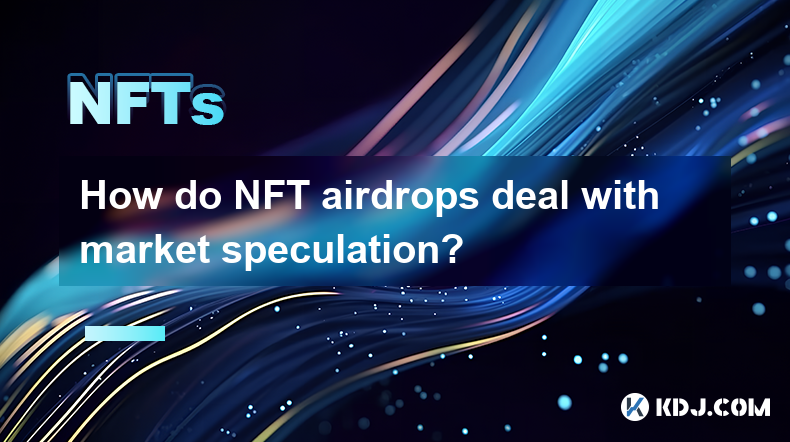
How do NFT airdrops deal with market speculation?
Apr 20,2025 at 10:28pm
NFT airdrops have become a significant phenomenon in the cryptocurrency space, often used as a marketing tool to distribute tokens or digital assets to a wide audience. However, they also introduce elements of market speculation that can impact the value and perception of NFTs. This article explores how NFT airdrops deal with market speculation, delving...
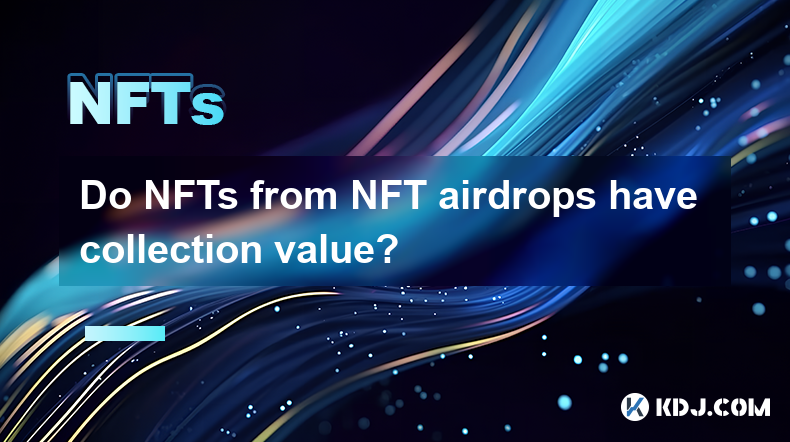
Do NFTs from NFT airdrops have collection value?
Apr 18,2025 at 11:49pm
NFTs, or non-fungible tokens, have become a significant part of the cryptocurrency ecosystem, and NFT airdrops are one way for projects to distribute these digital assets to their community. A common question that arises is whether NFTs received from airdrops have any collection value. To answer this question, we need to delve into various aspects of NF...
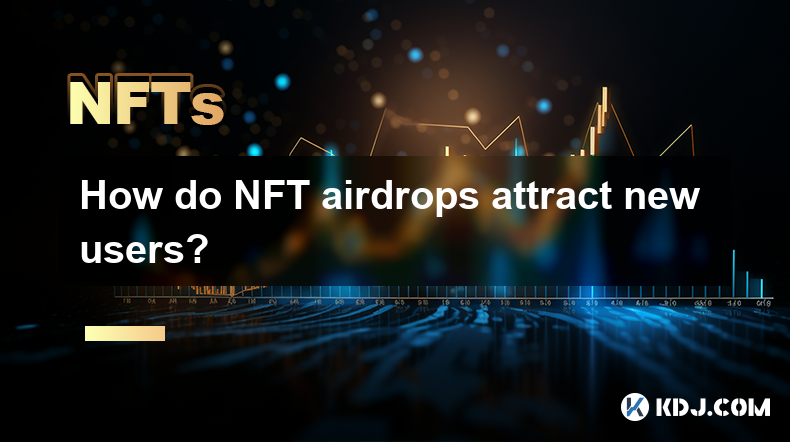
How do NFT airdrops attract new users?
Apr 21,2025 at 07:21am
NFT airdrops have become a popular strategy within the cryptocurrency community to attract new users and engage existing ones. By distributing free NFTs to a targeted audience, projects can create buzz, increase visibility, and foster a sense of community. This method leverages the allure of free digital assets to draw in participants who might not have...
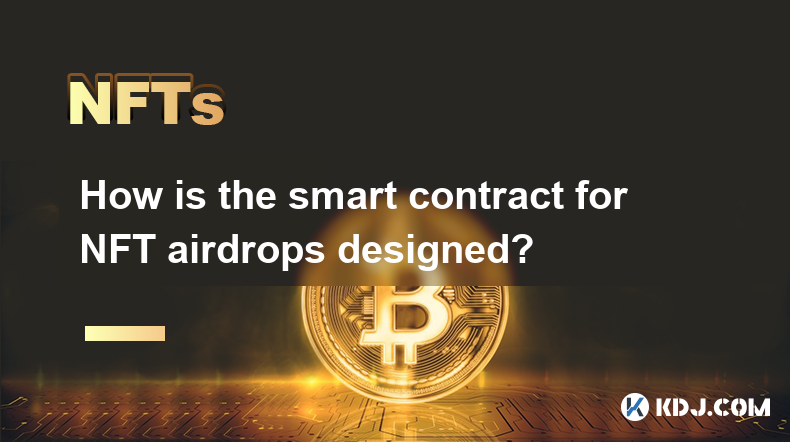
How is the smart contract for NFT airdrops designed?
Apr 18,2025 at 03:10am
The design of a smart contract for NFT airdrops is a complex process that requires careful consideration of various factors to ensure the airdrop is executed smoothly and securely. This article will delve into the intricacies of how such a smart contract is designed, focusing on key components, security measures, and the implementation process. Key Comp...
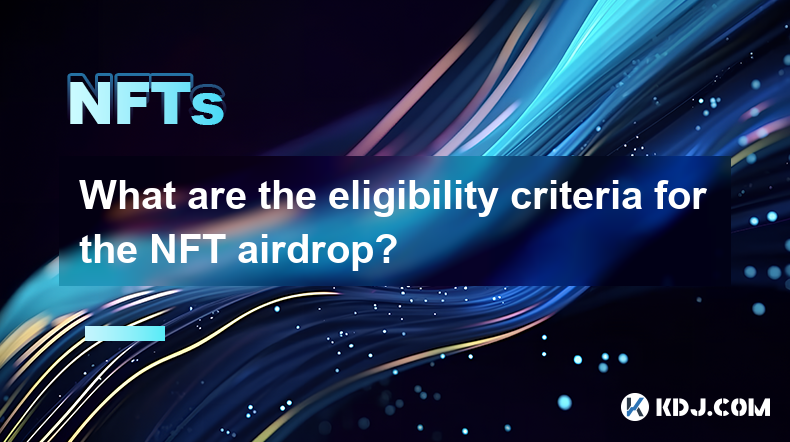
What are the eligibility criteria for the NFT airdrop?
Apr 17,2025 at 04:56pm
Understanding NFT AirdropsNFT airdrops are a popular method used by blockchain projects to distribute non-fungible tokens (NFTs) to their community members. These airdrops can serve various purposes, such as rewarding loyal users, promoting new projects, or increasing the visibility of existing ones. To participate in an NFT airdrop, individuals must me...

How to display and trade NFTs from NFT airdrops?
Apr 18,2025 at 04:42am
How to Display and Trade NFTs from NFT Airdrops? NFT airdrops have become a popular way for projects to distribute their tokens and engage with their community. If you've received NFTs through an airdrop, you might be wondering how to display and trade them. This article will guide you through the process step-by-step, ensuring you can showcase your NFT...

How do NFT airdrops deal with market speculation?
Apr 20,2025 at 10:28pm
NFT airdrops have become a significant phenomenon in the cryptocurrency space, often used as a marketing tool to distribute tokens or digital assets to a wide audience. However, they also introduce elements of market speculation that can impact the value and perception of NFTs. This article explores how NFT airdrops deal with market speculation, delving...

Do NFTs from NFT airdrops have collection value?
Apr 18,2025 at 11:49pm
NFTs, or non-fungible tokens, have become a significant part of the cryptocurrency ecosystem, and NFT airdrops are one way for projects to distribute these digital assets to their community. A common question that arises is whether NFTs received from airdrops have any collection value. To answer this question, we need to delve into various aspects of NF...

How do NFT airdrops attract new users?
Apr 21,2025 at 07:21am
NFT airdrops have become a popular strategy within the cryptocurrency community to attract new users and engage existing ones. By distributing free NFTs to a targeted audience, projects can create buzz, increase visibility, and foster a sense of community. This method leverages the allure of free digital assets to draw in participants who might not have...

How is the smart contract for NFT airdrops designed?
Apr 18,2025 at 03:10am
The design of a smart contract for NFT airdrops is a complex process that requires careful consideration of various factors to ensure the airdrop is executed smoothly and securely. This article will delve into the intricacies of how such a smart contract is designed, focusing on key components, security measures, and the implementation process. Key Comp...

What are the eligibility criteria for the NFT airdrop?
Apr 17,2025 at 04:56pm
Understanding NFT AirdropsNFT airdrops are a popular method used by blockchain projects to distribute non-fungible tokens (NFTs) to their community members. These airdrops can serve various purposes, such as rewarding loyal users, promoting new projects, or increasing the visibility of existing ones. To participate in an NFT airdrop, individuals must me...
See all articles






















































































